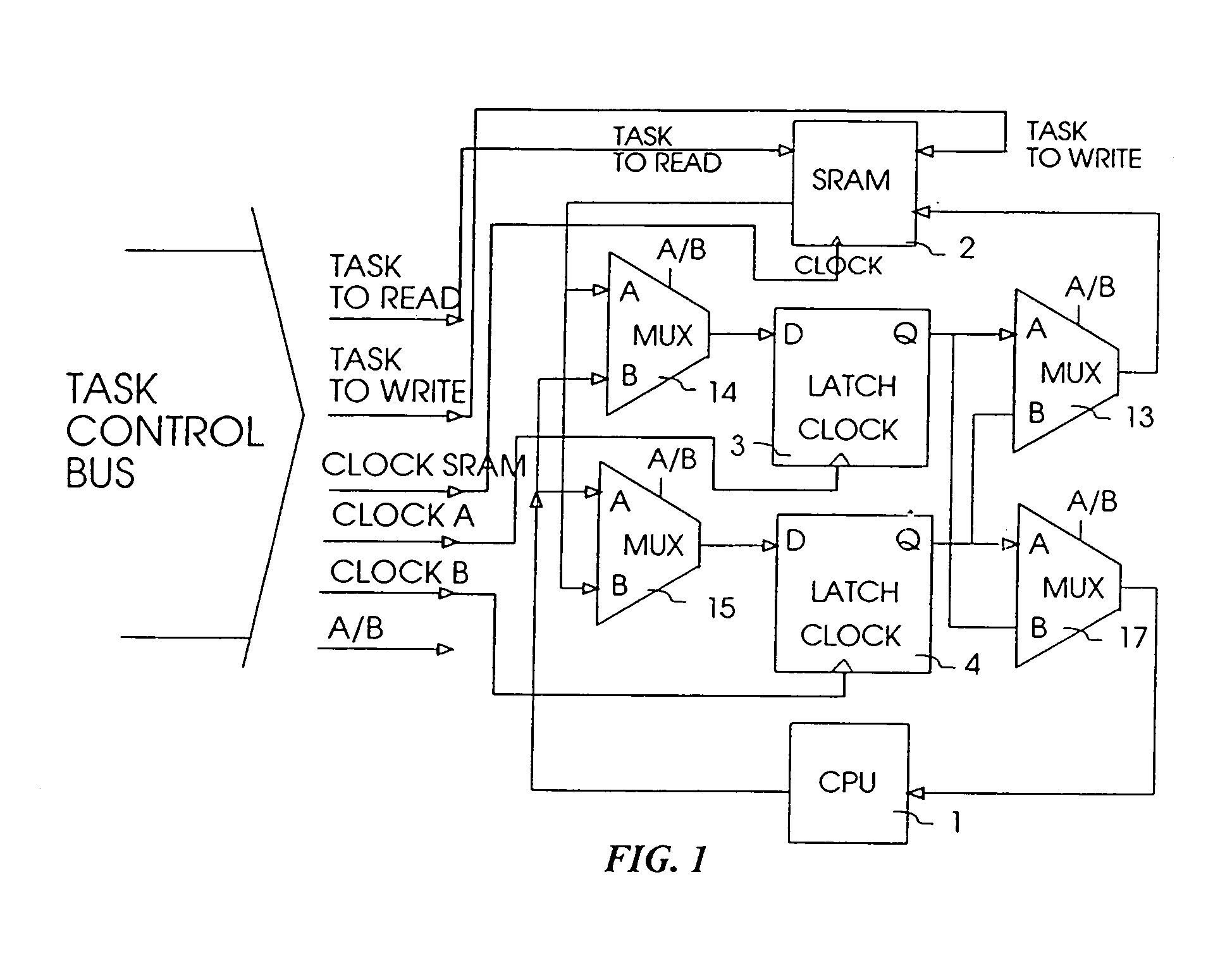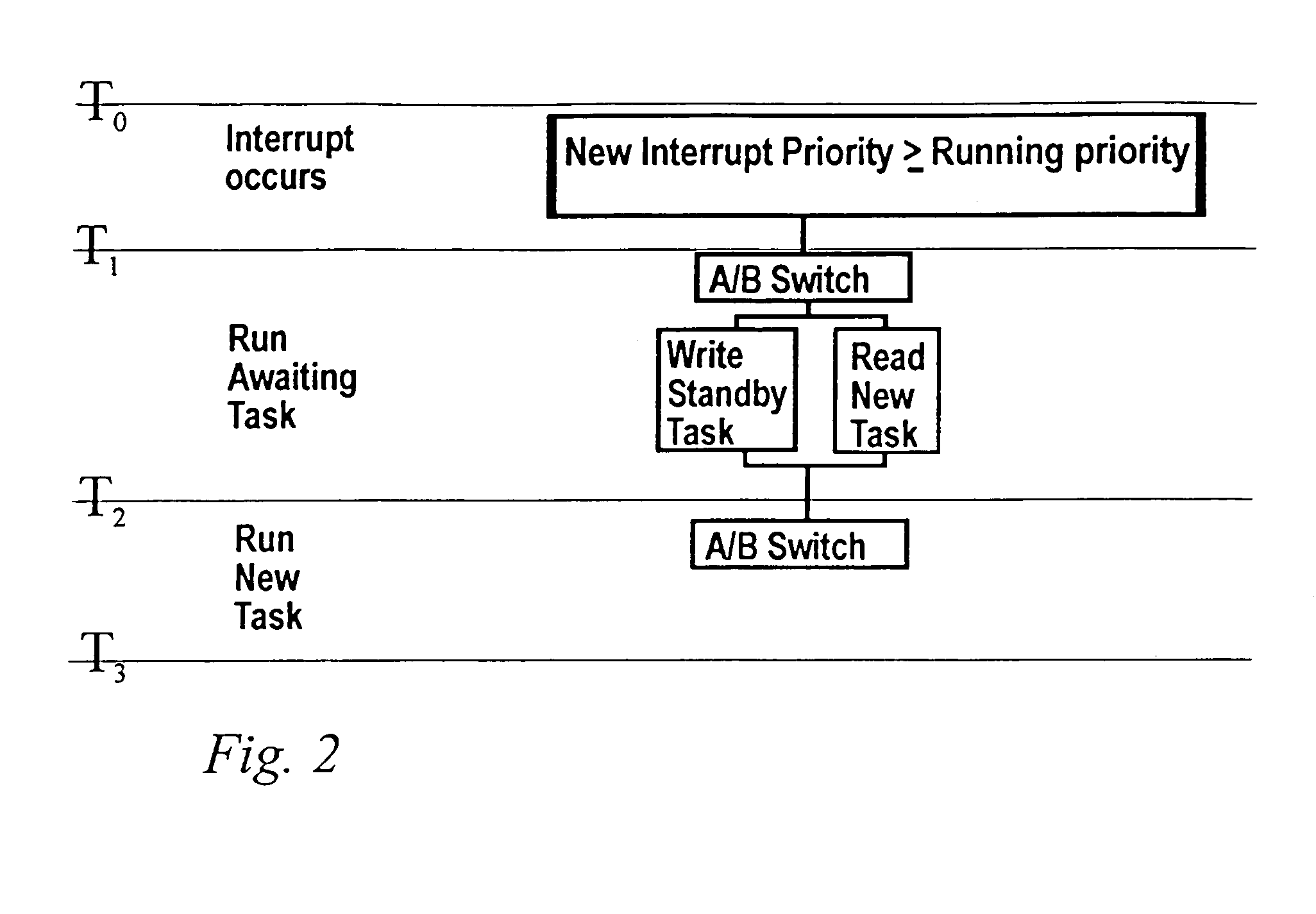Zero overhead computer interrupts with task switching
a task switching and task technology, applied in the field of interrupt processing and task switching circuitry, can solve the problems of high non-deterministic interrupt latency delay and overhead, time unavailable for processing, and insensitive computers to interrupts, so as to reduce the energy requirements of actual circuitry, reduce the possibility of additional electrical cooling energy, and reduce the effect of possible additional electrical cooling energy requirements
- Summary
- Abstract
- Description
- Claims
- Application Information
AI Technical Summary
Benefits of technology
Problems solved by technology
Method used
Image
Examples
Embodiment Construction
[0050]FIG. 1 schematically shows one bit slice of a task register for a computer 1. Thirty two such slices are used for each 32 bit register. Typically, a CPU would use a plurality of 32 bit registers. CPU 1 and static random access memory (SRAM) 2 can alternately be connected to latch 3 and latch 4 (never to the same latch). For discussion purposes we will start with latch 3 connected to the CPU and latch 4 connected to SRAM 2. In this configuration, the CPU is running the task stored in latch 3. While the CPU 1 is running a program using task latch 3, the hardware processes interrupts in the background.
[0051]FIG. 3 schematically illustrates the interrupt processing circuitry. The Hardware interrupts 90 contains all of the possible hardware sources for interrupts including external pins, and internal peripheral devices, and exception generators. In the preferred implementation, each of the major interrupt sources is assigned a fixed hardware task number. Alternatively, a flexible m...
PUM
 Login to View More
Login to View More Abstract
Description
Claims
Application Information
 Login to View More
Login to View More - R&D
- Intellectual Property
- Life Sciences
- Materials
- Tech Scout
- Unparalleled Data Quality
- Higher Quality Content
- 60% Fewer Hallucinations
Browse by: Latest US Patents, China's latest patents, Technical Efficacy Thesaurus, Application Domain, Technology Topic, Popular Technical Reports.
© 2025 PatSnap. All rights reserved.Legal|Privacy policy|Modern Slavery Act Transparency Statement|Sitemap|About US| Contact US: help@patsnap.com



